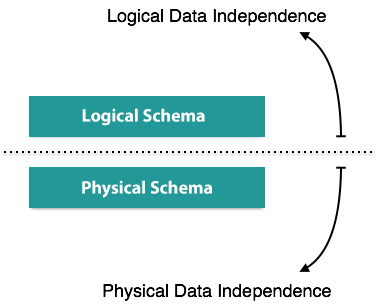Home >>DBMS Tutorial >DBMS Data Independence
DBMS Data Independence
DBMS Data Independence
If a database system is not multi-layered, so any improvements to the database system would be difficult to make. As we discovered earlier, database systems are built-in multi-layer models.
Data Independence
In addition to users ' data, a database system usually includes a lot of data. For instance, to easily locate and retrieve data, it stores data and information, known as metadata. Modification or updating a collection of metadata once it is placed in the database is very difficult. But when a DBMS expands, in order to fulfill the users ' requirements, it needs to evolve over time. It will become a tedious and highly complicated job if the entire data is based.

Metadata itself follows a layered architecture, such that it does not impact the data at another level when we modify data on one layer. This knowledge is independent but is mapped to each other.
Logical Data Independence
Logical data is database data, that is, it stores knowledge on how inside information is handled. A table (relation) stored in the database and all its constraints applied to that relationship, for example.
The independence of logical data is a kind of process that liberalizes itself from the actual data stored on the disk. If we make any changes to the table format, the data residing on the disk does not change.
Physical Data Independence
The schemas are all logical, and the actual data is stored on the disk in bit format. The ability to modify physical data without affecting the schema or logical data is physical data independence.
For eg, if we want to replace hard disks with SSD, if we want to modify or upgrade the storage system itself, it should not have any effect on logical data or schemes.
